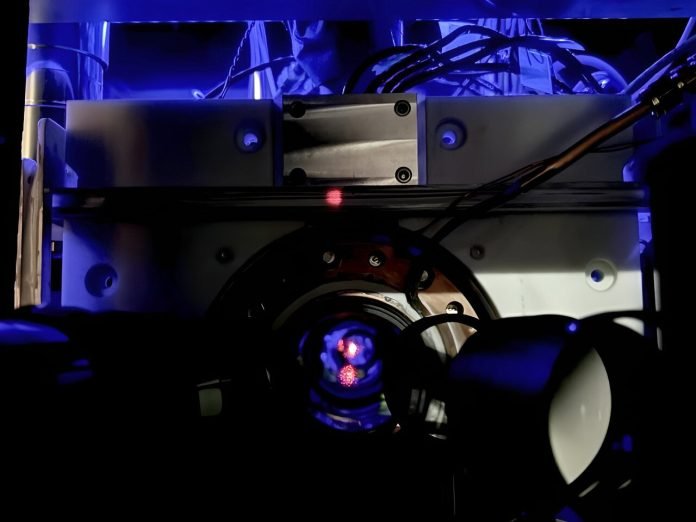
In the quest for ultimate precision, scientists at JILA, a joint institution of the National Institute of Standards and Technology (NIST) and the University of Colorado Boulder, have created the most accurate and precise atomic clock ever built.
This clock is not just for keeping time but could revolutionize navigation in space, help find new particles, and even detect hidden underground minerals.
Traditional atomic clocks use microwaves to measure the second by observing the behavior of atoms. However, this new generation of clocks uses visible light waves, which have a much higher frequency, to achieve greater accuracy.
While current microwave clocks are already very precise, optical clocks are expected to be even more so, potentially losing only one second every 30 billion years.
The new clock at JILA traps and measures tens of thousands of individual atoms using a web of light called an “optical lattice.”
By using a gentler web of laser light, the researchers reduced errors caused by the laser and prevented atoms from bumping into each other. This advancement allows the clock to measure time with unprecedented precision.
Having both high precision and high accuracy in atomic clocks opens up many possibilities. For example, it can test Einstein’s theory of general relativity on a microscopic scale. General relativity predicts that time moves slower in stronger gravitational fields.
The new clock is so precise that it can detect these tiny changes in time over distances as small as the thickness of a human hair.
More precise atomic clocks are crucial for space exploration. Accurate timekeeping is essential for navigating and landing spacecraft on distant planets. Tiny errors in timekeeping can lead to significant navigation mistakes over vast distances. The new clock could enable pinpoint accuracy for missions to Mars and beyond.
The methods used to control and measure atoms in the new clock can also benefit quantum computing.
Quantum computers need to manipulate the properties of individual atoms or molecules with extreme precision to perform complex calculations. The advancements in controlling microscopic quantum systems made by the JILA clock are a significant step forward in this field.
By measuring time with such high precision, scientists can explore new phenomena that were previously only theoretical. This includes studying the effects of gravity on time and understanding the fundamental nature of reality.
The new clock could help bridge the gap between the tiny scales of quantum mechanics and the large-scale phenomena described by general relativity.
“We’re exploring the frontiers of measurement science,” said Jun Ye, a physicist at NIST and JILA. “When you can measure things with this level of precision, you start to see phenomena that we’ve only been able to theorize about until now.”
This breakthrough in atomic clock technology promises to illuminate some of the universe’s deepest mysteries, from the nature of dark matter and dark energy to the fundamental principles of time and space.



